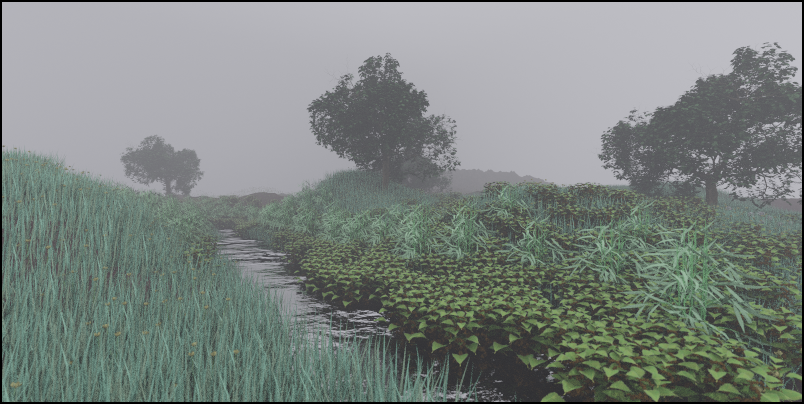Anything You Want to Talk About?
(No.)
Fall Course Ideas
As registration for the fall comes around, here are two possible courses (admittedly self-serving possibilities, since both are things I would teach):
Math 384, “Computational Graphics,” studies an approach to graphics called ray tracing, which is the gold standard for producing realistic images from completely artificial scenes, like this one:

It all comes from mathematically modeling the shapes of things in the world and how light interacts with them. TR 10:00 - 11:15, requires Math 230, Calculus 3, and Linear Algebra 1.
For other exposure to computing, especially computer graphics, I’m open to supervising directed studies. My research interests are in computer graphics, and particularly how to mathematically and computationally model and render images of natural objects such as trees, mountains, etc., and particularly at the moment crystal aggregates.
Element Chasing Proofs
Based on section 5.2 in the textbook and this discussion of element chasing.
Example
(From the discussion, and also the textbook’s Progress Check 5.12)
Prove that if A and B are subsets of some universal set U, then A - B = A ∩ BC.
We did this via element chasing arguments. The central idea there is to show that one set is a subset of another by considering a generic element of the first set, and “chasing” it through a series of logical inferences until you can conclude that it is also an element of the second set. Also doing this from the second set back to the first shows that the two sets are equal.
We expanded out this idea in LaTeX as an example of a complete element chasing proof. The source code and typeset file are both available online.
Notice that the element chasing arguments in this proof turn set operations into logical statements (e.g., x is in A - B means that x is in A and x is not in B, x not in B means x is in BC, etc.), then we translated those logical statements into other set operators. So knowing the definitions of the set operations in terms of logic is helpful; if you don’t remember those definitions right off, Venn diagrams can help you reconstruct them:
Another thing to notice about this proof is that it uses separate paragraphs for each major part of the proof, in particular for the introduction, the conclusion, and each element chasing argument (there are 2 of them, one to show that every element in A - B is also in A ∩ BC and the other to show that every element in A ∩ BC is also in A - B). Breaking a long proof up into paragraphs helps readers see what the high-level plan of the proof is, and where they are in that plan as they read.
The main new LaTeX features here are the \cap and \cup commands to produce intersection and union symbols, respectively.
Another Example
A preview of one of the algebraic laws about sets that we’ll look at next.
What do you think the relationship between (A ∪ B)C and AC ∩ BC is, where A and B are sets.
Once again, a Venn diagram was helpful. For (A ∪ B)C we found the region outside A and B:
For AC ∩ BC we found the region outside A but also outside B, which seemed to be exactly the same:
So we have a conjecture: (A ∪ B)C = AC ∩ BC.
Let’s see if we can prove it. We didn’t write the full proof formally, but outlined the key ideas:
Use element chasing, and do it both from (A ∪ B)C to AC ∩ BC and vice versa.
For the first direction, let x be in (A ∪ B)C, meaning that…
- It’s not the case that x is in A or x is in B
- So x is not in A and x is not in B (by De Morgan’s law for logical expressions)
- So x is in AC and x is in BC
- So x is in AC ∩ BC.
To go the other way, start with x being in AC ∩ BC. This means that…
- x is in AC and x is in BC
- So x is not in A and x is not in B
- Which by DeMorgan’s Law is equivalent it’s not the case that x is in A or x is in B
- So x is in (A ∪ B)C.
Next
An algebra of set operations, providing an alternative way to prove properties of sets.
Please read section 5.3 in the textbook, up to but not including “Proving That Statements Are Equivalent.”
Please also contribute to this discussion of set algebra and proofs.